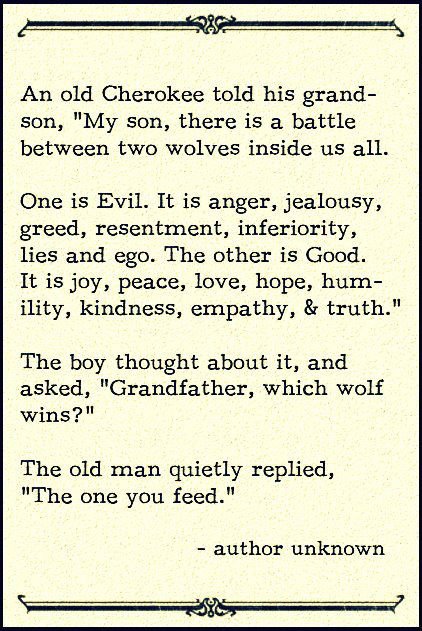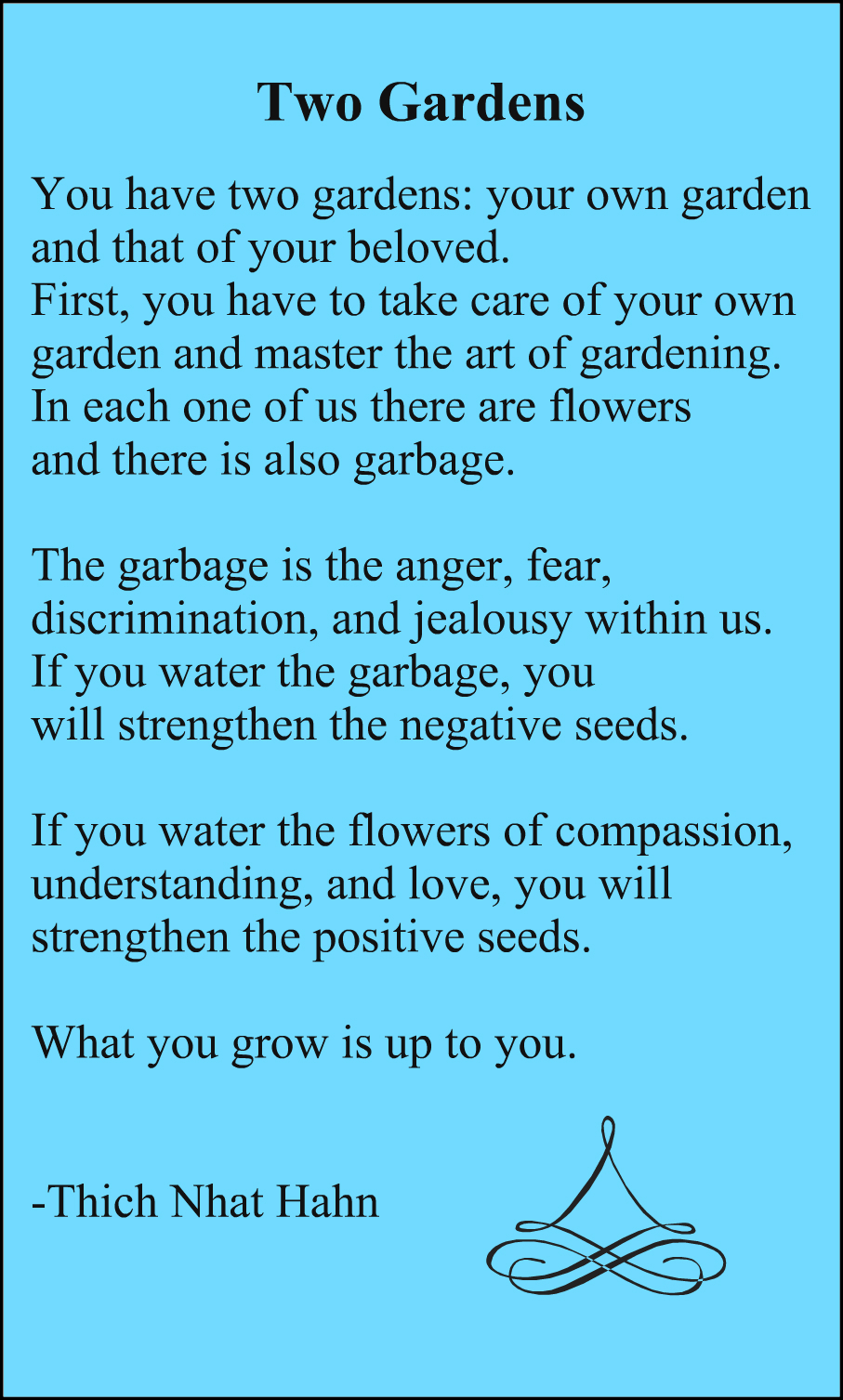

In both of these allegories the idea that each individual has opposing forces within which we all must learn to navigate is emphasized. The individual’s ability to choose where they put their attention in these narratives is clear, which creates a sense of autonomy and personal power.
Not unlike the epic story told in the Star Wars movies, we each have a light and a dark force, but it is up to the individual to be aware of those forces, and to concentrate their efforts toward their chosen aims. As the saying goes “where the mind goes, the energy flows.”
Even in cultivating an awareness of these polarities can begin to create a space in which we can cease self-judgment and begin to understand and honor the dynamics of having a Self. We all have these forces within. We all get to choose where we focus, how we expend our energies. In that space of freedom we can begin to explore our options, and choose according to our values instead of acting out of habit.
In his book, Thich Nhat Hahn expands upon this idea of dual gardens within and also uses the ‘two garden’ metaphor as it applies to relationships. He encourages each of us to not only nourish the garden of kindness and compassion within but to also see those qualities in our beloved and through the process of ‘selective gardening,’ to foster their qualities of inherent goodness, kindness and love.
Read the full introduction to Thich Nhat Hanh’s new book on Lion’s Roar
